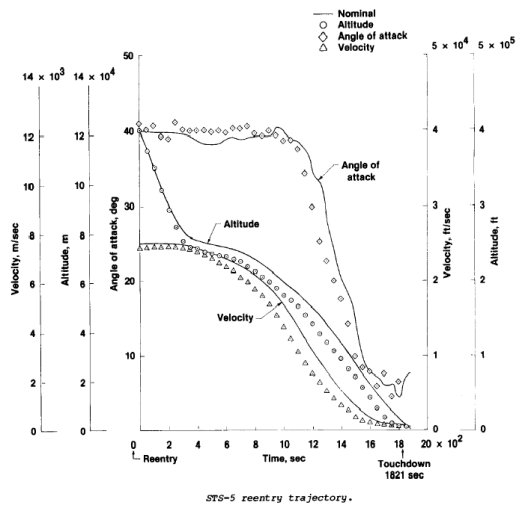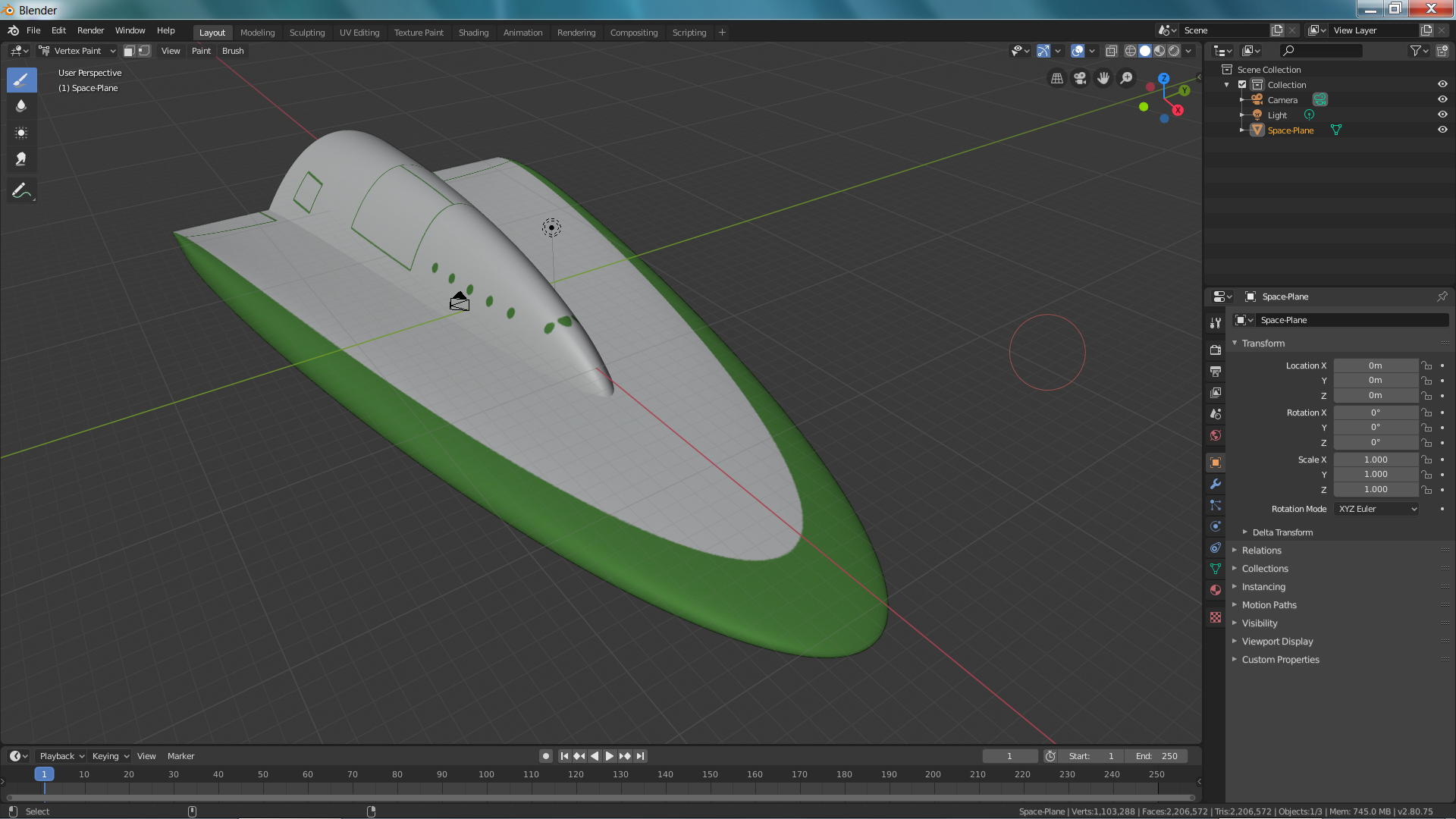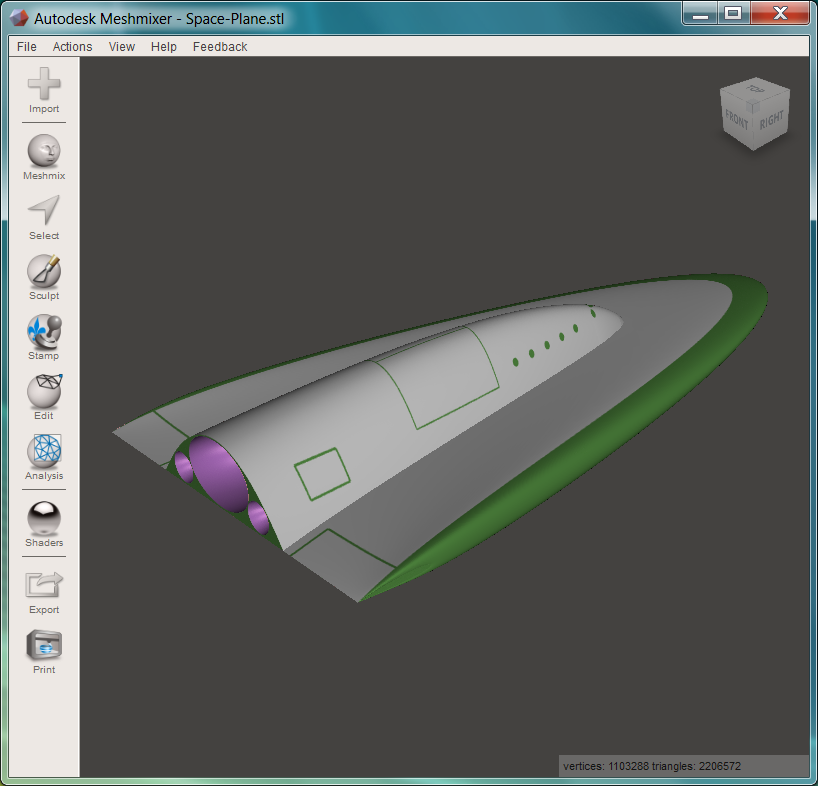New Mars Forums
You are not logged in.
- Topics: Active | Unanswered
Announcement
#1 2023-01-16 13:00:19
- tahanson43206
- Moderator
- Registered: 2018-04-27
- Posts: 21,655
Space Plane design by Space-Plane.org
While we wait for the folks at space-plane.org to contribute to this topic, here is a screen shot of the Blender rendition of their design.
The file itself can be downloaded by anyone from the Files option of space-plane.org.

I have tested the STL image viewer they offer as a download, and it worked. However, the system I tried it on was a student caliber 64 bit laptop running a limited edition of Windows 10.
On a 32 bit machine running an ancient Linux, the image rendered in Blender 2.58, but everything took forever because this is a ** big ** file.
On a 64 bit machine running Blender 2.79 performance was acceptable (that was Windows 7)
I have just now tested the file using Blender 3.0.1 on a 64 bit machine running Linux 22.04.
Performance was acceptable.
I can provide more images if anyone is interested.
On the ** other ** hand, indications seem to be that practically anyone (GW Johnson excepted) can run the software to see the lifting body shape.
I'm hoping our new member (PhotonBytes) will pick up this topic for officially approved posts about the company and the project.
(th)
Offline
Like button can go here
#2 2023-01-16 13:35:28
- SpaceNut
- Administrator
- From: New Hampshire
- Registered: 2004-07-22
- Posts: 29,479
Re: Space Plane design by Space-Plane.org
As you had argued it's a design topic, so science makes sense. As I am reminded of those years way back when sliding on snow we would a similar shaped metal sled.

now everything is made out of plastic even the old 2 runner sleds are too dangerous.
Offline
Like button can go here
#3 2023-01-17 13:07:46
- tahanson43206
- Moderator
- Registered: 2018-04-27
- Posts: 21,655
Re: Space Plane design by Space-Plane.org
For SpaceNut and all...
GW Johnson informed me by email that he has seen the image in Post #1 of this topic.
He is still working on his latest mini-project, involving design of shapes for towing in atmosphere, so it may be a while before he comments on the Space-Plane.org design.
Anyone with a 3D Printer, or with access to one, can (should be able to) print a 1:1000 scale model of the design.
The model will be 60 millimeters long, or just under 3 inches. This is an ideal size for a home 3D printer.
(th)
Offline
Like button can go here
#4 2023-01-18 11:40:27
- tahanson43206
- Moderator
- Registered: 2018-04-27
- Posts: 21,655
Re: Space Plane design by Space-Plane.org
Update regarding correspondence: An email from GW Johnson was forwarded to PhotonBytes today.
(th)
Offline
Like button can go here
#5 2023-01-19 08:28:39
- PhotonBytes
- Member
- From: AUSTRALIA
- Registered: 2019-12-28
- Posts: 77
- Website
Re: Space Plane design by Space-Plane.org
Orbiter Re-entry Path

We ran the CFD from Mach 0 - 25 and altitudes 0 - 105 km and plan to do ascent and reentry optimization next. Tom is right about the 40 deg max attack angle. We thank him for his input! We were planning no greater than 20 degrees to stay stable.


Meshmixer loads the STL with colors and is a tiny installation compared to Blender. Blender only shows the colors on the PLY import, which is an even bigger file than the STL with colors embedded.
We uploaded the PLY file and added it to the 'Files' page with HTTP instruction to download rather than open the file.
http://space-plane.org/files.htm
With a simple switch in Blender you can display STL in color but it doesnt understand Vertex Color when loading STL so we use a PLY file for that.
Last edited by PhotonBytes (2023-01-19 09:16:24)
I play the piano
https://fb.watch/s7XPqxw02-/
Offline
Like button can go here
#6 2024-05-30 10:43:26
- tahanson43206
- Moderator
- Registered: 2018-04-27
- Posts: 21,655
Re: Space Plane design by Space-Plane.org
A reusable Single Stage to Orbit vehicle might look something like this.
Orbiter Re-entry Path
http://photonbytes.com/wp-content/uploa … eentry.gif
We ran the CFD from Mach 0 - 25 and altitudes 0 - 105 km and plan to do ascent and reentry optimization next. Tom is right about the 40 deg max attack angle. We thank him for his input! We were planning no greater than 20 degrees to stay stable.
Meshmixer loads the STL with colors and is a tiny installation compared to Blender. Blender only shows the colors on the PLY import, which is an even bigger file than the STL with colors embedded.
We uploaded the PLY file and added it to the 'Files' page with HTTP instruction to download rather than open the file.
http://space-plane.org/files.htm
With a simple switch in Blender you can display STL in color but it doesnt understand Vertex Color when loading STL so we use a PLY file for that.
Offline
Like button can go here